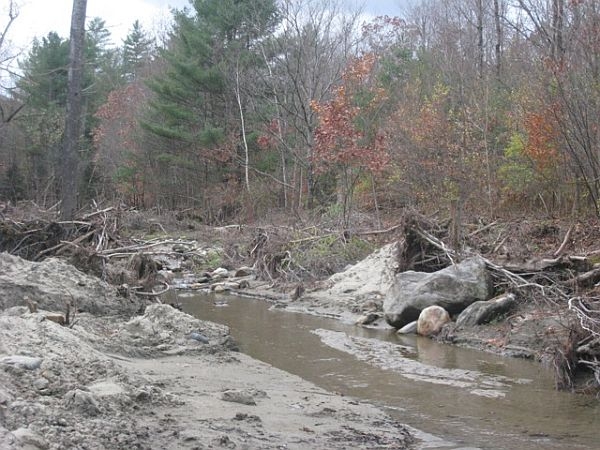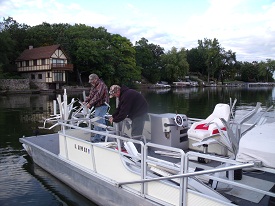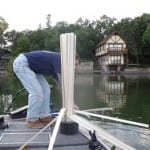(Host) Tropical Storm Irene washed trees and other debris into rivers and streams.
With winter coming on and the spring floods that follow, the state has launched an initiative to assess the location of debris that could dam up water flow.
But as VPR’s Nancy Cohen, reports there’s no state money to remove the logjams.
(Cohen) The Agency of Natural Resources is asking regional planning commissions to work with towns to identify what clean up work on which rivers and streams should be a priority. Natural Resources Secretary Deb Markowitz says there’s a concern about log jams
(Markowitz) “The trees around streams and brooks were lifted out of the grounds and now are in the rivers and streams. The towns are concerned that if they don’t act, it’s going to cause problems during the seasonal flood in the spring.”
(Cohen) The six regional planning commissions in the areas most affected by Irene are surveying towns, including the Windham County commission.
Chris Campany, its executive director, is in South Newfane, where the Rock River jumped across Dover Road during the flood.
He says the survey is trying to pinpoint where there are areas that are still vulnerable to flooding during winter thaws or spring flooding. Campany says the survey asks about debris jams in streams that may act like a dam during a thaw.
(Campany) “As ice breaks up or as water flows you basically wind up with a lake forming up behind that debris jam. And then it either finds its own course or it breaks through and suddenly you have that surge of water.”
(Cohen) Campany says big pieces of debris could cause big problems
(Campany ) “Some of the logs are going to be the battering rams that you have during the next flood event.”
(Cohen) The Agency of Natural Resources will send engineers and hydrologists to assess the debris jams that pose the highest risks. The agency can help decide how much debris should be left in a stream to protect fish habitat and how much should be removed.
But Justin Johnson, the deputy commissioner of the Department of Environmental Conservation, says there’s no state money to help towns or private property owners remove the debris.
(Johnson) “If there’s a log jam or some kind of a debris jam that’s imminently threatening a public assets then we can usually get FEMA money to help remove that. But if it’s just something on private, sending water onto private land somewhere, it’s not going to affect a public asset we don’t have access to money to do anything with that .”
(Cohen) Private property owners might be able to get funding from the U.S. Department of Agriculture to remove debris that could cause a flood.
For VPR News I’m Nancy Cohen
(Host) Reporting about Vermont’s recovery from the floods of Tropical Storm Irene is supported by the VPR Journalism Fund.
See the dozens of unique artificial fish habitat models, fish attractors and fish cover used at fishiding.com, the industry leader and only science based, man made and artificial fish habitat, proven to provide all fish with cover they prefer to prosper.
- Disqus
- Like
- Dislike
- 1 p




 By redirecting Kama Creek to its original formation, it is hoped fish like Brook Trout will repopulate the area. (Lakehead University)After studying the area extensively, Stewart said researchers were confident the creek could be restored to a condition resembling its original pre-1960s configuration.
By redirecting Kama Creek to its original formation, it is hoped fish like Brook Trout will repopulate the area. (Lakehead University)After studying the area extensively, Stewart said researchers were confident the creek could be restored to a condition resembling its original pre-1960s configuration. Graduate students are expected to take part in the ongoing monitoring of Kama Creek. (Lakehead University)He said he expects that future graduate students will carry out post-monitoring for the Kama restoration.
Graduate students are expected to take part in the ongoing monitoring of Kama Creek. (Lakehead University)He said he expects that future graduate students will carry out post-monitoring for the Kama restoration.


































